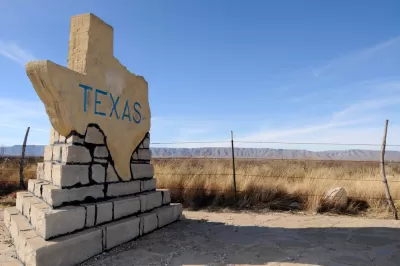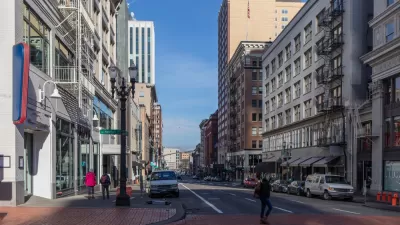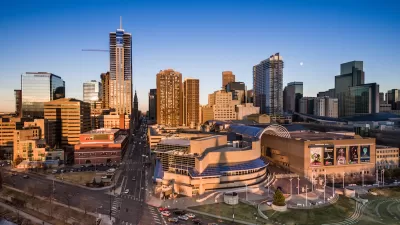State-administered roads in rural parts of Texas have some of the highest speed limits in the state, and see more fatal crashes than urban roads.

Reporting for the Houston Chronicle, Dug Begley outlines the plight of Texas’s rural roads, which, “Despite carrying about 21 percent of the state’s daily miles driven, … represent 34 percent of all highway deaths.”
As Begley writes, “In ‘Keeping Rural Texas Connected,’ researchers found that 251 projects to improve highways outside metro and suburban areas were completed since 2015, at a cost of $7.5 billion, and another 127 valued at $7.2 billion are under construction according to the Texas Department of Transportation.” Yet the Texas Trunk System, “the 30-year-old goal state officials set to make sure every area of Texas with a population of more than 20,000 is connected by a safe, four-lane divided road,” is still short $27.8 billion in backlogged projects.
“One of the challenges to garnering support for rural roads,” according to Texas Transportation Commissioner Alvin New, “is that Texas is becoming more urban, but much of its transportation needs remain decidedly rural.”
Begley writes that “Safety advocates argue Texas highway officials must combat one of the most common reasons for severe crashes — excessive speed. As roads are rebuilt and widened, care needs to be made to not enable faster trips that actually increase risk, they say.” As Jay Crossley, executive director of nonprofit Farm & City, puts it, “In rural, suburban, and urban Texas, the facilities designed for the highest speeds are our state on-system roadways, where there are terrible results of someone driving 70 miles an hour every day.”
FULL STORY: $27B backlog in rural road projects could pose risk to drivers, Texas economy, report finds

Maui's Vacation Rental Debate Turns Ugly
Verbal attacks, misinformation campaigns and fistfights plague a high-stakes debate to convert thousands of vacation rentals into long-term housing.

Planetizen Federal Action Tracker
A weekly monitor of how Trump’s orders and actions are impacting planners and planning in America.

In Urban Planning, AI Prompting Could be the New Design Thinking
Creativity has long been key to great urban design. What if we see AI as our new creative partner?

Portland Raises Parking Fees to Pay for Street Maintenance
The city is struggling to bridge a massive budget gap at the Bureau of Transportation, which largely depleted its reserves during the Civd-19 pandemic.

Spokane Mayor Introduces Housing Reforms Package
Mayor Lisa Brown’s proposals include deferring or waiving some development fees to encourage more affordable housing development.

Houston Mayor Kills Another Bike Lane
The mayor rejected a proposed bike lane in the Montrose district in keeping with his pledge to maintain car lanes.
Urban Design for Planners 1: Software Tools
This six-course series explores essential urban design concepts using open source software and equips planners with the tools they need to participate fully in the urban design process.
Planning for Universal Design
Learn the tools for implementing Universal Design in planning regulations.
Gallatin County Department of Planning & Community Development
Heyer Gruel & Associates PA
JM Goldson LLC
City of Camden Redevelopment Agency
City of Astoria
Transportation Research & Education Center (TREC) at Portland State University
Jefferson Parish Government
Camden Redevelopment Agency
City of Claremont





























